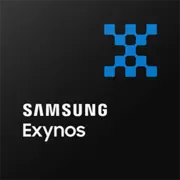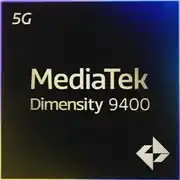Samsung Exynos 2400

Samsung Exynos 2400: Power and Innovation in the World of Mobile Processors
(Introduction)
Mobile processors are the heart of modern smartphones, determining their performance, energy efficiency, and capabilities. The Samsung Exynos 2400, introduced at the end of 2023, is the company's response to the growing demands for mobile devices. With Geekbench 6 scores of 2080 in Single-Core and 6582 in Multi-Core, along with a record-breaking AnTuTu 10 score of 1,698,761 points, this chip claims to be one of the most powerful solutions on the market. In this article, we will explore what makes the Exynos 2400 unique, how it performs with real-world tasks, and who should pay attention to it.
1. Architecture and Process Technology: 10 Cores, 4 nm, and Revolutionary GPU
The Exynos 2400 is built on Samsung's 4-nanometer process technology, ensuring high transistor density and improved energy efficiency. Its CPU architecture includes 10 cores, divided into three clusters:
- 1× Cortex-X4 with a frequency of 3.21 GHz for maximum performance in demanding tasks.
- 2× Cortex-A720 (2.9 GHz) — a balance between power and energy consumption.
- 3× Cortex-A720 (2.6 GHz) and 4× Cortex-A520 (1.95 GHz) — for background tasks and battery saving.
This approach allows for flexible load distribution: for instance, when launching a game, the X4 and A720 cores are activated, while only the energy-efficient A520 cores operate during music playback.
GPU Xclipse 940 is the main pride of the processor. Developed in collaboration with AMD based on the RDNA 3 architecture, it supports ray tracing in mobile games and enhanced shader systems. This makes the visualization more realistic, and the frame rates stable even in projects like Genshin Impact or Call of Duty: Mobile.
2. Performance in Real Tasks: From Gaming to AI
Gaming: With the Xclipse 940, smartphones powered by the Exynos 2400 show up to 25% higher FPS compared to the Exynos 2200. For example, in PUBG Mobile at Ultra HD settings and 90 FPS, the processor maintains stability even after an hour of gameplay. Support for VRS (Variable Rate Shading) reduces the load on the GPU, saving battery life.
Multimedia: The chip supports encoding/decoding of 8K@60fps video and output to screens with a 144 Hz refresh rate. This is perfect for shooting in high resolution and viewing HDR content.
AI Applications: The built-in 3rd generation neural processor (NPU) accelerates tasks such as photo processing (e.g., enhancing details in low light), speech recognition, and AR applications. For instance, the "Smart Translation" feature works in real-time while consuming 15% less energy than its predecessor.
Energy Consumption and Heating: The 4-nm process technology and ARMv9 optimization reduce energy consumption by 20% compared to the Exynos 2200. However, during prolonged gaming sessions, temperatures may reach 42–45°C, so devices using this SoC are equipped with cooling systems with vapor chambers.
3. Integrated Modules: Speed and Global Connectivity
- Exynos 5300 Modem: Supports 5G mmWave and Sub-6 GHz with peak speeds up to 10 Gbps. Compatible with 4G LTE-Advanced Pro.
- Wi-Fi 7: Speeds up to 5.8 Gbps and reduced latency for streaming and online gaming.
- Bluetooth 5.3: Improved connectivity stability for wireless headphones and smartwatches.
- Satellite Navigation: Supports GPS, GLONASS, Galileo, and BeiDou, as well as dual-frequency positioning (L1+L5) for accuracy of up to 30 cm.
4. Comparison with Competitors: Who Are the Leaders?
- Snapdragon 8 Gen 3: Leads in Single-Core tests (2300 in Geekbench 6), but the Exynos 2400 excels in Multi-Core performance (6582 versus 6400). The Adreno 750 GPU in Snapdragon is better optimized for gaming, but the Xclipse 940 offers more advanced features like ray tracing.
- Apple A17 Pro: Dominates in Single-Core (~2900), but falls short in Multi-Core (~7200) and AI performance. However, iOS makes better use of chip resources.
- MediaTek Dimensity 9300: Similar Multi-Core performance (6600), but a less efficient Mali-G720 GPU.
The Exynos 2400 ranks second after Snapdragon in gaming but surpasses many in multi-threading and AI tasks.
5. Use Cases: Who Is the Exynos 2400 For?
- Gaming: Revolutionary graphics with ray tracing, but requires good cooling.
- Daily Tasks: Instant response when switching between applications; efficient handling of demanding editors like Lightroom.
- Photo and Video: Processing 200 MP images, shooting 8K with HDR10+, real-time noise reduction algorithms.
6. Pros and Cons
Pros:
- Best-in-class Multi-Core performance.
- Support for Wi-Fi 7 and dual-band 5G.
- Advanced GPU features for future games.
Cons:
- Heating under peak load.
- Less optimization for third-party applications compared to Snapdragon.
7. Practical Tips: How to Choose a Smartphone with Exynos 2400?
- Cooling: Look for models with vapor chambers and graphite thermal pads.
- Display: An AMOLED with LTPO and a 120 Hz refresh rate will unlock the GPU's potential.
- Memory: Ideally, 12 GB of RAM and UFS 4.0.
- Target Devices: Flagships like the Samsung Galaxy S24/S24+ (in select regions), as well as premium tablets.
8. Final Conclusion: Who Should Consider the Exynos 2400?
This processor is perfect for:
- Tech enthusiasts who value a balance between gaming performance and multimedia capabilities.
- Travelers who need fast map loading and stable connectivity.
- Content creators shooting in 8K and editing videos on their smartphones.
The key benefits are readiness for future communication standards, support for innovative features in games, and energy efficiency for everyday use. The Exynos 2400 confirms that Samsung is capable of creating chips that compete with the best offerings from Qualcomm and Apple.
Basic
GPU Specifications
Connectivity
Memory Specifications
Miscellaneous
Benchmarks
Compared to Other SoC
Related SoC Comparisons
Share in social media
Or Link To Us
<a href="https://cputronic.com/soc/samsung-exynos-2400" target="_blank">Samsung Exynos 2400</a>



